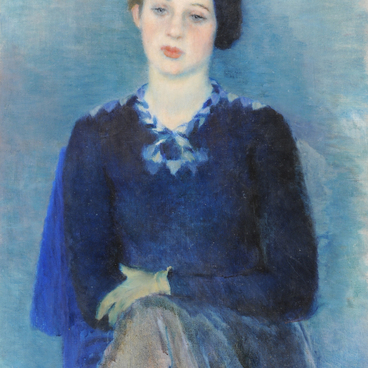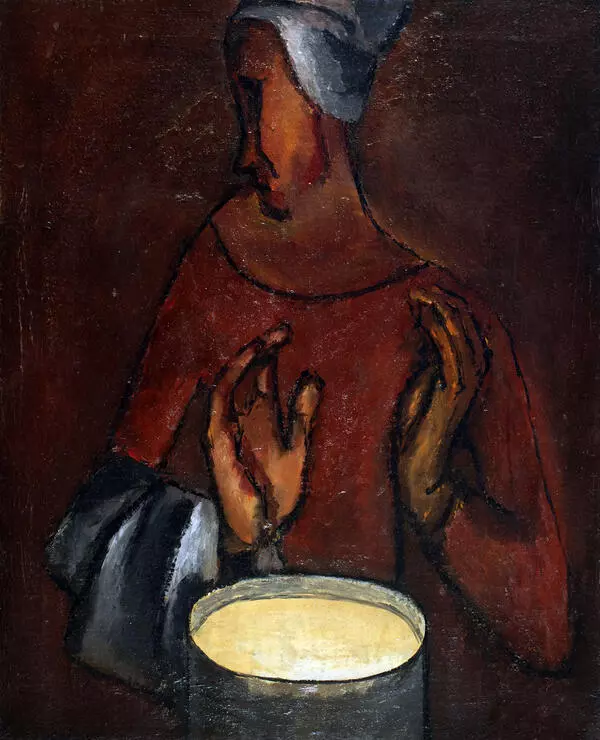One of the brightest figures in the city’s cultural life was the unusually energetic and talented artist Valentin Yustitskiy. His exuberant activity in the 1920s, willingness to participate in numerous disputes, coupled with a certain amount of disgraceful behavior and a playful lack of self-consciousness, created the impression of an aesthetic omnivorousness. In Saratov, he invariably found himself at the very center of all significant artistic endeavors and events. Yustitskiy’s individuality cannot be explained by any one single creative hobby that he had: the artist boldly and artistically transformed any of the style crazes back in whose field he wound up, always giving it his own vocalization.
Susceptible to all kinds of trends, and not having a constant reference point, he never possessed the adamant tenacity that trailblazers have, or the consistency of devoted students who are forever bewitched by the creative principles of a mentor. The power of one-sidedness was alien to him. He is interesting due to the exact opposite: his willingness to assimilate various impulses, the flexibility of his reactions to changing circumstances, and his habitual craving for constant, ironically playful self-renewal.
According to documents from the turn of the 1920s that have survived, Yustitskiy was seriously preoccupied with searching for the laws governing how shapes take form, and identifying the primary significant elements that make up form. He was fascinated by the problems of statics and dynamics, and concerned about the very materials used in painting, abstracted from the subject that carries it, devoid of any graphic theme, built on the emphatically revealed expression of the painting’s color textures themselves, which became the “plot” for these non-graphic works. It was like training sessions in mastering the expressive capabilities of the material. His Scenic design (with a wire), created in 1920, runs in the same vein as these searches. At that time, the artist gravitated more toward to Tatlin than to Malevich. During this time, striving for self-contained picturesqueness, he wrote: “The masterpiece will still be the covering the plane with a tone so colorific that neither literature, nor psychology, nor dimensions and forms are needed”.
Susceptible to all kinds of trends, and not having a constant reference point, he never possessed the adamant tenacity that trailblazers have, or the consistency of devoted students who are forever bewitched by the creative principles of a mentor. The power of one-sidedness was alien to him. He is interesting due to the exact opposite: his willingness to assimilate various impulses, the flexibility of his reactions to changing circumstances, and his habitual craving for constant, ironically playful self-renewal.
According to documents from the turn of the 1920s that have survived, Yustitskiy was seriously preoccupied with searching for the laws governing how shapes take form, and identifying the primary significant elements that make up form. He was fascinated by the problems of statics and dynamics, and concerned about the very materials used in painting, abstracted from the subject that carries it, devoid of any graphic theme, built on the emphatically revealed expression of the painting’s color textures themselves, which became the “plot” for these non-graphic works. It was like training sessions in mastering the expressive capabilities of the material. His Scenic design (with a wire), created in 1920, runs in the same vein as these searches. At that time, the artist gravitated more toward to Tatlin than to Malevich. During this time, striving for self-contained picturesqueness, he wrote: “The masterpiece will still be the covering the plane with a tone so colorific that neither literature, nor psychology, nor dimensions and forms are needed”.
But soon the young artist became carried away by the spatial tectonic pursuit represented by constructivism.




